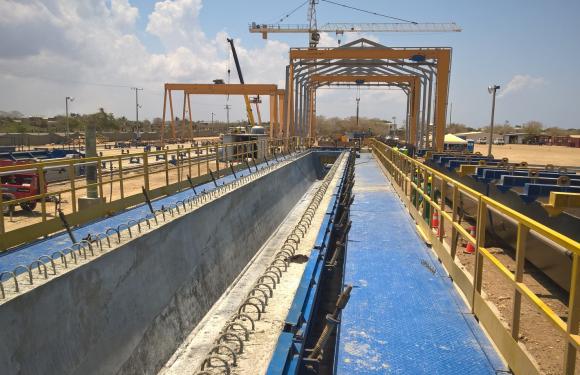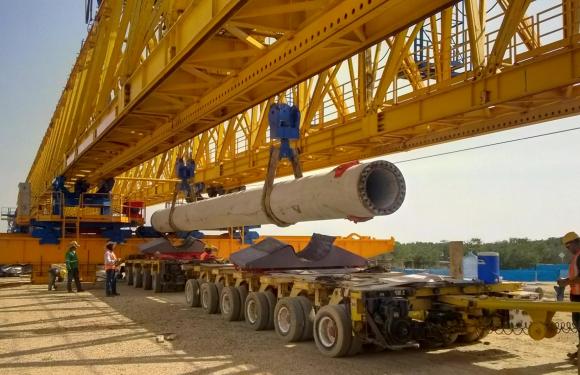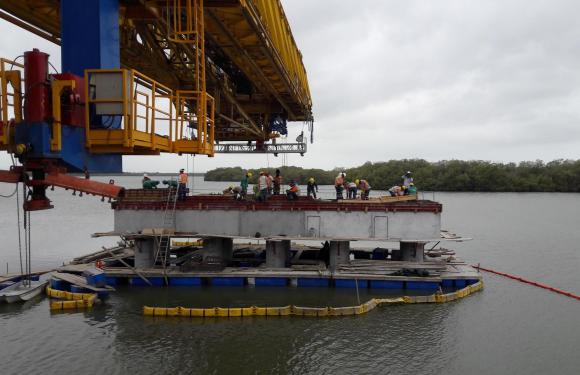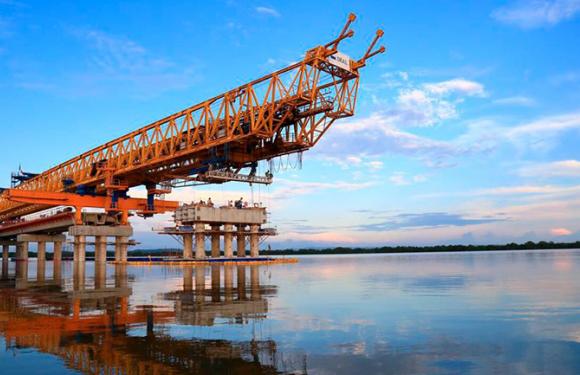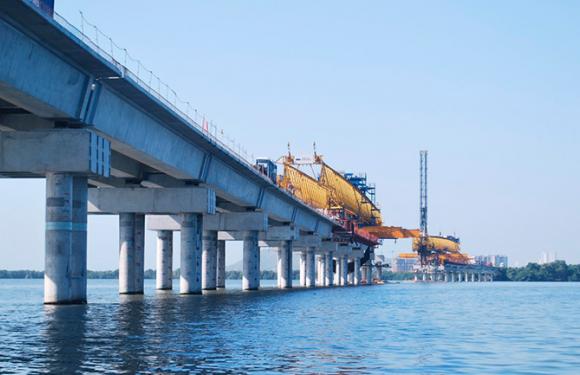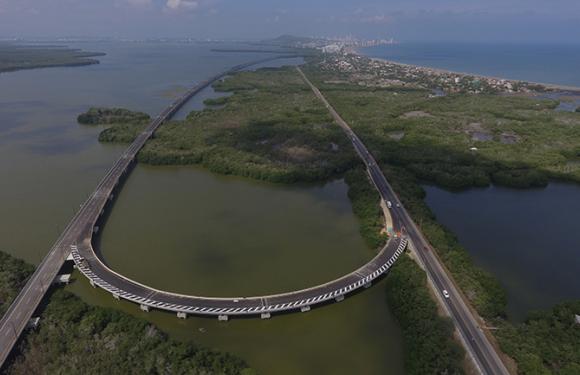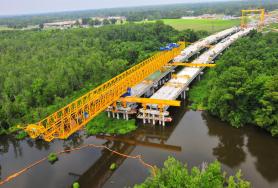Gran Manglar Viaduct
Cartagena de Indias, Colombia
A viaduct built through a nature reserve with the innovative top-down method
Colombia's longest bridge, which will pass over the La Virgen swamp at Cartagena, will be ready in June 2018, four months ahead of the original schedule
Execution
The solutions
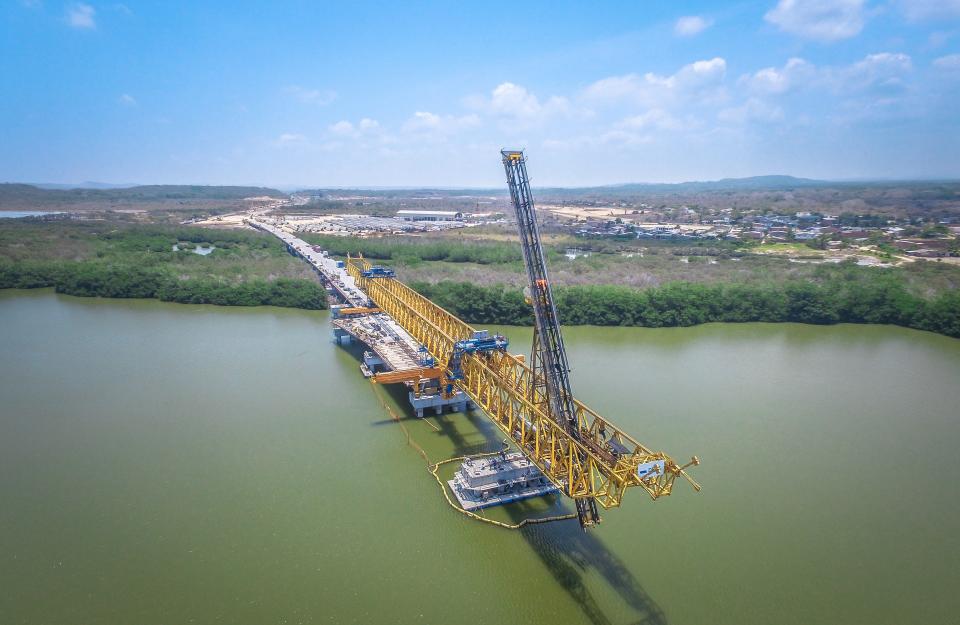
The top-down construction method avoids the need for dredging, concrete slabs and the construction of access roads, which otherwise would have damaged the natural reserve for years.
The solution consists of a launching girder which is able to drive piles in the marshland and to launch pile caps and girders.
Request information
The viaduct consists of 129, 37m-long spans and it is entirely made up of prefabricated, prestressed concrete elements, excluding the completion elements and the cast-in-situ slabs.
Prefabrication of the elements takes place in a precast yard adjacent to the abutment 130. The implant consists of three production lines: pile caps, piles and girders.
Request information
